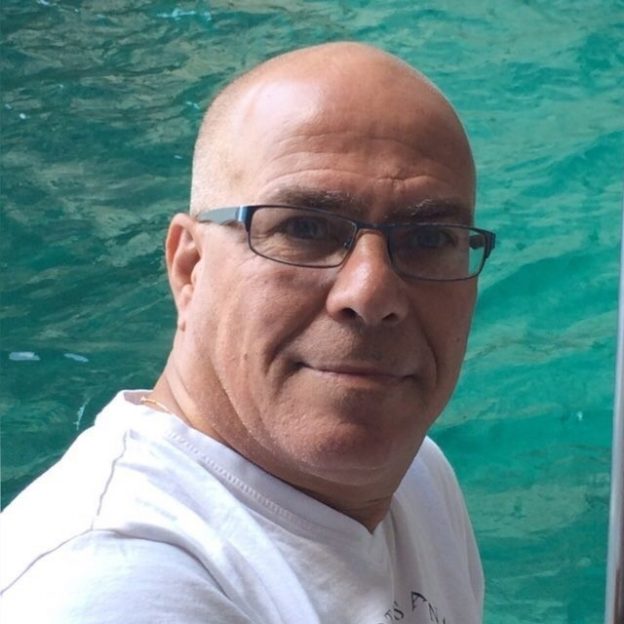Finanzmarkt- und Konzernmacht-Zeitalter der Plutokratie unterstützt von der Mediakratie in den Lobbykraturen der Geld-regiert-Regierungen in Europa, Innsbruck am 19.05.2018
Liebe® Blogleser_in,
Bewusstheit, Liebe und Friede sei mit uns allen und ein gesundes sinnerfülltes Leben wünsch ich ebenfalls.
Aus dieser Quelle zur weiteren Verbreitung entnommen: https://friendsofsyria.wordpress.com/2018/04/23/snipers-ordered-to-shoot-children-israeli-general-confirms/
Friends of Syria ~ revealing the truth
Snipers ordered to shoot children, Israeli general confirms
23MondayApr 2018
Posted in news
Benjamin Netanyahu, Brigadier-General (Res.) Zvika Foge, Israel, Murder, Palestine, Palestinian children

An Israeli general has confirmed that when snipers stationed along Israel’s boundary with Gaza shoot at children, they are doing so deliberately, under clear and specific orders.
In a radio interview, Brigadier-General (Reserve) Zvika Fogel describes how a sniper identifies the “small body” of a child and is given authorization to shoot.
Fogel’s statements could be used as evidence of intent if Israeli leaders are ever tried for war crimes at the International Criminal Court.
On Friday, an Israeli sniper shot dead 14-year-old Muhammad Ibrahim Ayyoub.
The boy, shot in the head east of Jabaliya, was the fourth child among the more than 30 Palestinians killed during the Great March of Return rallies that began in Gaza on 30 March.
More than 1,600 other Palestinians have been shot with live ammunition that has caused what doctors are calling “horrific injuries” likely to leave many of them with permanent disabilities.
As eyewitnesses and video confirmed, the child Muhammad Ayyoub posed no conceivable danger to heavily armed Israeli occupation forces stationed dozens of meters away behind fences and earthen fortifications on the other side of the Gaza boundary when he was killed.
Even the usually timid United Nations peace process envoy Nickolay Mladenov publicly declared that the slaying was “outrageous.”
Targeting children
On Saturday, Brigadier-General Fogel was interviewed by Ron Nesiel on the Israeli public radio network Kan.
Fogel is the former chief of staff of the Israeli army’s “southern command,” which includes the occupied Gaza Strip.
Ahmad Tibi, a Palestinian lawmaker in Israel’s parliament, drew attention to the interview in a tweet.
A recording of the interview is online (it begins at 6:52). The interview was translated for The Electronic Intifada by Dena Shunra and a full transcript follows this article.
The host Ron Nesiel asks Fogel if the Israeli army should “rethink its use of snipers,” and suggests that someone giving orders “lowered the bar for using live fire.”
Fogel adamantly defends the policy, stating: “At the tactical level, any person who gets close to the fence, anyone who could be a future threat to the border of the State of Israel and its residents, should bear a price for that violation.”
He adds: “If this child or anyone else gets close to the fence in order to hide an explosive device or check if there are any dead zones there or to cut the fence so someone could infiltrate the territory of the State of Israel to kill us …”
“Then his punishment is death?” Nesiel interjects.
“His punishment is death,” the general responds. “As far as I’m concerned then yes, if you can only shoot him to stop him, in the leg or arm – great. But if it’s more than that then, yes, you want to check with me whose blood is thicker, ours or theirs.”
Fogel then describes the careful process by which targets – including children – are identified and shot:
“I know how these orders are given. I know how a sniper does the shooting. I know how many authorizations he needs before he receives an authorization to open fire. It is not the whim of one or the other sniper who identifies the small body of a child now and decides he’ll shoot. Someone marks the target for him very well and tells him exactly why one has to shoot and what the threat is from that individual. And to my great sorrow, sometimes when you shoot at a small body and you intended to hit his arm or shoulder, it goes even higher.”
For “it goes even higher,” Fogel uses a Hebrew idiom also meaning “it costs even more.”
In this chilling statement, in which a general talks about snipers targeting the “small body of a child,” Fogel makes crystal clear that this policy is premeditated and deliberate.
While presenting unarmed Palestinian children as dangerous terrorists worthy of death, Fogel describes the snipers killing them in cold blood as the innocent, vulnerable parties who deserve protection.
“We have soldiers there, our children, who were sent out and receive very accurate instructions about whom to shoot to protect us. Let’s back them up,” he says.
Lethal policy
Fogel’s statements are no aberration but represent Israeli policy.
“Israeli officials made it clear that the open-fire regulations would permit lethal fire at anyone attempting to damage the fence, and even at any person coming within 300 meters of it,” the Israeli human rights group B’Tselem stated in a recent analysis of Israel’s illegal targeting of unarmed civilians who pose no threat.
“Nevertheless, all state and military officials have steadfastly refused to cancel the unlawful orders and continue to issue – and justify – them,” B’Tselem added.
B’Tselem has called on individual soldiers to defy such illegal orders.
Following its investigation of the “calculated” killings of unarmed demonstrators on 30 March, the first day of the Great March of Return rallies in Gaza, Human Rights Watch concluded that the lethal crackdown was “planned at [the] highest levels of the Israeli government.”
Two weeks ago, the chief prosecutor of the International Criminal Court issued an unprecedented warning that Israeli leaders may face trial for the killings of unarmed Palestinian protesters in the Gaza Strip.
Potential defendants would be giving any prosecutor a gift with such open admissions that killing unarmed people in an occupied territory who pose no objective threat is their policy and intent.
The question remains whether anything will finally pierce the shield of impunity that Israel has enjoyed for 70 years.
Full Transcript
Brigadier-General (Res.) Zvika Fogel interviewed on the Yoman Hashevua program of Israel’s Kan radio, 21 April 2018.
Ron Nesiel: Greetings Brigadier General (Res.) Zvika Fogel. Should the IDF [Israeli army] rethink its use of snipers? There’s the impression that maybe someone lowered the bar for using live fire, and this may be the result?
Zvika Fogel: Ron, let’s maybe look at this matter on three levels. At the tactical level that we all love dealing with, the local one, also at the level of values, and with your permission, we will also rise up to the strategic level. At the tactical level, any person who gets close to the fence, anyone who could be a future threat to the border of the State of Israel and its residents, should bear a price for that violation. If this child or anyone else gets close to the fence in order to hide an explosive device or check if there are any dead zones there or to cut the fence so someone could infiltrate the territory of the State of Israel to kill us …
Nesiel: Then, then his punishment is death?
Fogel: His punishment is death. As far as I’m concerned then yes, if you can only shoot him to stop him, in the leg or arm – great. But if it’s more than that then, yes, you want to check with me whose blood is thicker, ours or theirs. It is clear to you that if one such person will manage to cross the fence or hide an explosive device there …
Nesiel: But we were taught that live fire is only used when the soldiers face immediate danger.
Fogel: Come, let’s move over to the level of values. Assuming that we understood the tactical level, as we cannot tolerate a crossing of our border or a violation of our border, let’s proceed to the level of values. I am not Ahmad Tibi, I am Zvika Fogel. I know how these orders are given. I know how a sniper does the shooting. I know how many authorizations he needs before he receives an authorization to open fire. It is not the whim of one or the other sniper who identifies the small body of a child now and decides he’ll shoot. Someone marks the target for him very well and tells him exactly why one has to shoot and what the threat is from that individual. And to my great sorrow, sometimes when you shoot at a small body and you intended to hit his arm or shoulder it goes even higher. The picture is not a pretty picture. But if that’s the price that we have to pay to preserve the safety and quality of life of the residents of the State of Israel, then that’s the price. But now, with your permission, let us go up one level and look at the overview. It is clear to you that Hamas is fighting for consciousness at the moment. It is clear to you and to me …
Nesiel: Is it hard for them to do? Aren’t we providing them with sufficient ammunition in this battle?
Fogel: We’re providing them but …
Nesiel: Because it does not do all that well for us, those pictures that are distributed around the world.
Fogel: Look, Ron, we’re even terrible at it. There’s nothing to be done, David always looks better against Goliath. And in this case, we are the Goliath. Not the David. That is entirely clear to me. But let’s look at it at the strategic level: you and I and a large part of the listeners are clear that this will not end up in demonstrations. It is clear to us that Hamas can’t continue to tolerate the fact that its rockets are not managing to hurt us, its tunnels are eroding …
Nesiel: Yes.
Fogel: And it doesn’t have too many suicide bombers who continue to believe the fairytale about the virgins waiting up there. It will drag us into a war. I do not want to be on the side that gets dragged. I want to be on the side that initiates things. I do not want to wait for the moment where it finds a weak spot and attacks me there. If tomorrow morning it gets into a military base or a kibbutz and kills people there and takes prisoners of war or hostages, call it as you like, we’re in a whole new script. I want the leaders of Hamas to wake up tomorrow morning and for the last time in their life see the smiling faces of the IDF. That’s what I want to have happen. But we are dragged along. So we’re putting snipers up because we want to preserve the values we were educated by. We can’t always take a single picture and put it before the whole world. We have soldiers there, our children, who were sent out and receive very accurate instructions about whom to shoot to protect us. Let’s back them up.
Nesiel: Brigadier-General (Res.) Zvika Fogel, formerly Head of the Southern Command Staff, thank you for your words.
Fogel: May you only hear good news. Thank you.
When is this Genocide Going to End
31 Saturday Mar 2018
Posted in crimes against humanity
Photos: Tens of thousands march on Gaza border, Israeli troops open fire
At least 12 Palestinians are killed and 1,100 wounded as Israeli forces open fire on Palestinian protesters gathering at the Gaza-Israel border fence to mark the beginning of ‘The Great Return March,’ a 45-day-long series of events and protests planned to culminate on May 15 — Nakba Day. Despite using deadly force against the demonstrators Israeli army did not report a single casualty among its troops.
Photos by Mohammed Zaanoun, Oren Ziv (Activestills), and +972 Magazine
Text by +972 Magazine Staff

Palestinians tend to a boy who was shot in the leg by Israeli snipers during the Great Return March in Gaza, east of the Jabaliya refugee camp. March 30, 2018. (Mohammed Zaanoun / Activestills.org)
Tens of thousands of Palestinians protested at the Gaza-Israel border fence on Friday, marking the beginning of the “Great Return March,” a 45-day-long series of protests and events planned to culminate on May 15 — Nakba Day. The organizers of the Gaza return march had said explicitly that the protest was meant to be nonviolent yet Israeli forces fired live bullets and tear gas at the demonstrators.
Israeli troops killed at least 12 Palestinians during Friday’s protests, which took place at several points along the besieged coastal strip’s border. The Palestinian Ministry of Health reported that more than 1,100 people were wounded from gunfire and teargas inhalation. The Israeli army reported zero injuries among its troops.

Palestinian medics signal to Israeli soldiers that they are unarmed as they attempt to retrieve wounded protesters east of Jabaliya during the Gaza return march, seen from the Palestinian side. March 30, 2018. (Mohammed Zaanoun / Activestills.org)

Palestinian medics signal to Israeli soldiers that they are unarmed as they attempt to retrieve wounded Palestinians along the Gaza border fence, seen from the Israeli side, March 30, 2018. (Oren Ziv/Activestills.org)
A number of youth threw a small number of stones and burned car tires. Mahmoud Jundieh, a 20-year-old unemployed man said, “We have nothing left to lose, we’ve lost everything. I’m not afraid to be a martyr at this point. I will stay here for 45 days, until representatives from around the world recognize our rights.”

Tens of thousands of Palestinians gathered at several points along the border as part of the Great March of Return, east of Shujaiyeh, Gaza Strip, March 30, 2018. (+972 Magazine)

Tens of thousands of Palestinians take part in the ‘Great Return March, east of Jabaliya. March 30, 2017. (Mohammed Zaanoun / Activestills.org)

A Palestinian medic carries a wounded Palestinian man away from the border fence during the Great Return March in Gaza, east of the Jabaliya refugee camp. March 30, 2018. (Mohammed Zaanoun / Activestills.org)
Even before the march began Israeli security forces launched a public campaign painting the ‘Great Return March’ as a violent, Hamas-sponsored event. The Israeli army’s chief of staff announced the deployment of 100 snipers and several infantry brigades to the area of the Gaza border fence. Israeli generals warned ahead of time that there will be Palestinian casualties.
The Israeli army personally threatened bus company owners and their families against transporting protesters to the border. “From my point of view,” COGAT Gen. Yoav Mordechai told Al-Hura TV, “if bus companies you own take some of the protesters and bring them to the border, you and your families will be held personally responsible.”

Palestinian families take part in the festivities at the start of the ‘Great Return March.’ March 30, 2017. (Mohammed Zaanoun / Activestills.org)

Palestinian men tend to a wounded protester during the Great Return March in Gaza, east of Jabaliya. March 30, 2018. (Mohammed Zaanoun / Activestills.org)

Palestinians rally at tents hundreds of meters from the boarder fence, east of Jabaliya, in Gaza, during the beginning of the Great Return March. March 30, 2018. (Mohammed Zaanoun / Activestills.org)

Tens of thousands of Palestinians gathered at several points along the Gaza-Israel border as part of the first day of the Great Return March, March 30, 2018. (+972 Magazine)
Friday’s march in Gaza also coincided with the anniversary of Land Day, which itself commemorates how in 1976 Israeli security forces responded to a general strike and mass protest of Palestinian citizens of Israel by killing six and wounding some 100 others.
On Land Day and Nakba Day in 2011, thousands of Palestinians from Lebanon, Syria, the West Bank and Gaza, and inside Israel marched on the country’s borders. On the Lebanese, Syrian, and Gaza borders, the army responded with gunfire, killing dozens and wounding hundreds.

Palestinian youth approach the border fence as Israeli snipers look on from a mound of dirt on the other side, east of Shajaia, Gaza, during the start of the ‘Great Return March.’ March 30, 2017. (+972 Magazine)

A Palestinian protester uses a sling shot to throw stones in the direction of the border fence during the Great Return March, east of Shajaia. March 30, 2018. (+972 Magazine)

An Israeli soldier sets up what appears to be a mobile command post or sniper position on the Israeli side of the Gaza border fence. March 30, 2018. (Oren Ziv / Activestills.org)

An Israeli army drone drops tear gas canisters onto Palestinians gathered at the Great March of Return, east of Shujaiyeh, March 30, 2018. (+972 Magazine)

Tens of thousands of Palestinians protest to mark the start of the Great Return March, seen from the Israeli side of the border. March 30, 2018. (Oren Ziv / Activestills.)

Israeli forces fire tear gas and live ammunition at Palestinian protesters near the Gaza border fence during the start of the Great Return March, seen from the Israeli side of the border. March 30, 2018. (Oren Ziv / Activestills.org)
——————————————————————————————————–
Aus dem per ÖVP-Amtsmissbräuche offenkundig verfassungswidrig agrar-ausgeraubten Tirol, vom friedlichen Widerstand, Klaus Schreiner
Don´t be part of the problem! Be part of the solution. Sei dabei! Gemeinsam sind wir stark und verändern unsere Welt! Wir sind die 99 %!
“Wer behauptet, man braucht keine Privatsphäre, weil man nichts zu verbergen hat, kann gleich sagen man braucht keine Redefreiheit weil man nichts zu sagen hat.“ Edward Snowden

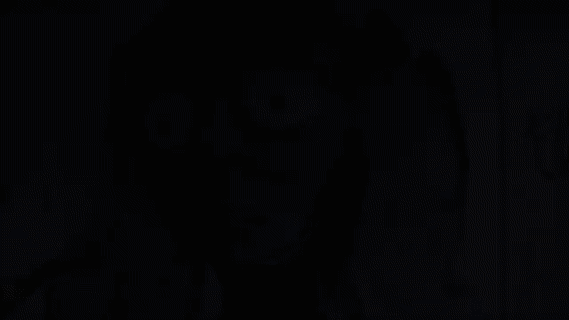
Hier noch eine kurzes Video zur Erklärung der Grafik Gewaltspirale der US-Kriege
https://www.youtube.com/watch?v=1PnxD9Z7DBs
GRUNDLAGENWERKE zu 09/11 – die ein Aufwachen garantieren:
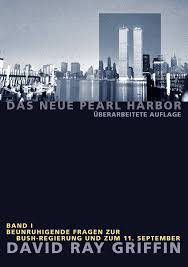
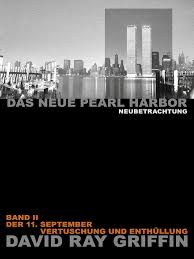
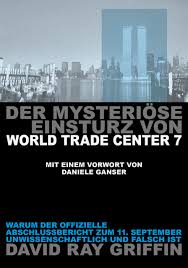
David Ray Griffin / Daniele Ganser
Der mysteriöse Einsturz von World Trade Center 7:
Warum der offizielle Abschlußbericht zum 11. September unwissenschaftlich und falsch ist
496 Seiten Peace Press, Berlin/Bangkok, 2017ISBN 3-86242-007-8
Bestellmöglichkeiten:- über http://www.peace-press.org oder
oliver.bommer@peace-press.org Euro 29,80 mit Luftpost –
über Amazon Euro 39,80 (inkl. Amazon-Gebühren) mit Luftpost- über jede Buchhandlung Euro 29,80 per Seeweg oder Euro 34,80 per Luftpost
https://www.youtube.com/watch?v=rlLM_TXf2GA



Bitte teile diesen Beitrag:

